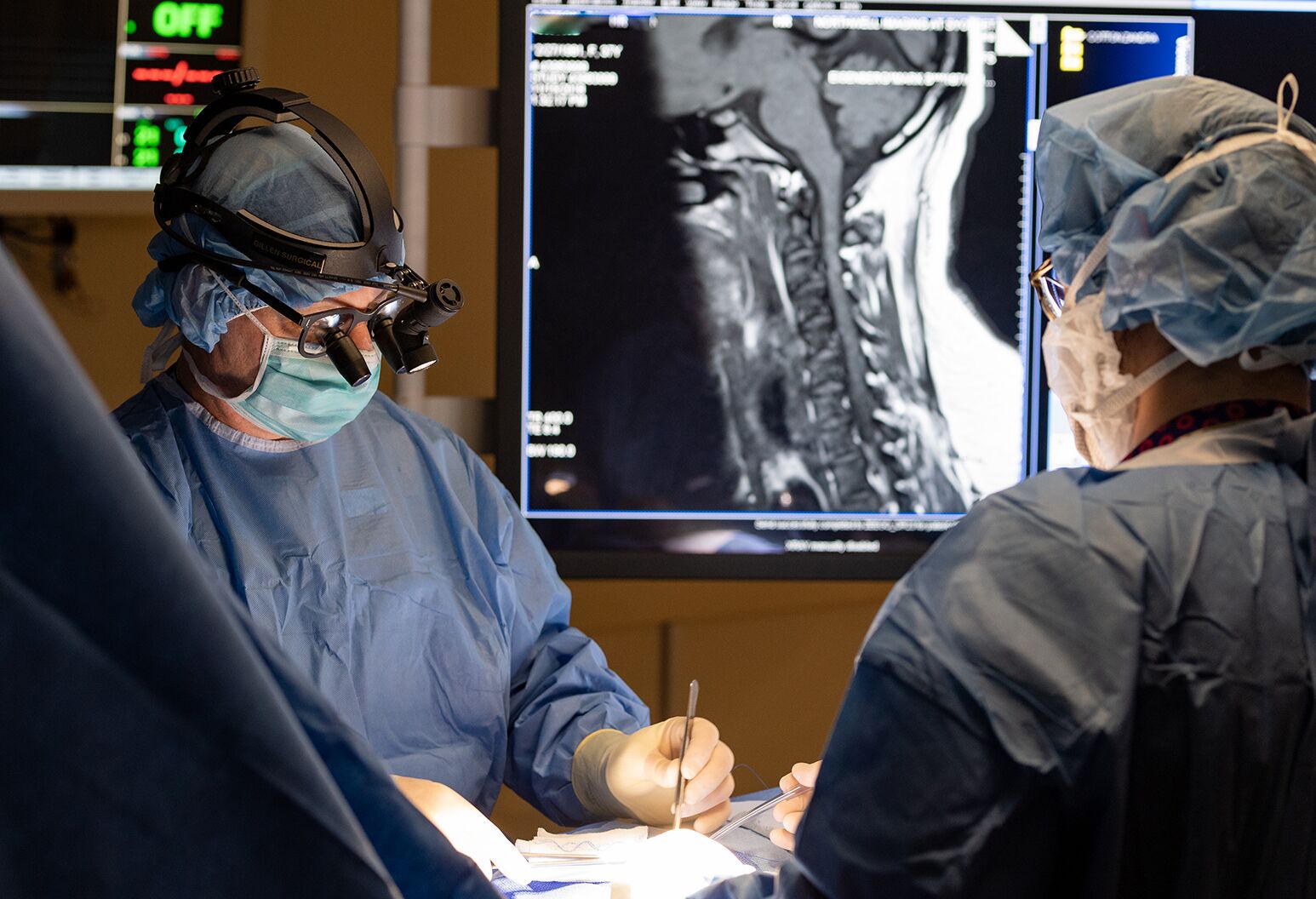A Summary of Spine Problems That Frequently Lead To Surgical Treatments
Spine problems such as herniated discs, spine constriction, and degenerative disc condition often necessitate surgical treatments when traditional treatments fail to ease relentless signs and symptoms. Comprehending the nuances of each problem and the equivalent medical choices, such as discectomy or spinal blend, is vital for efficient administration.
Herniated Discs
Although many people with herniated discs may find alleviation via conventional treatments, surgery becomes an essential consideration when symptoms intensify or linger - best spine surgeons in st louis mo. A herniated disc happens when the soft internal gel of a spine disc extends via its outer layer, possibly leading and pressing close-by nerves to discomfort, tingling, or weakness in the extremities
Conventional management usually consists of physical therapy, pain medicines, and corticosteroid injections, which aim to lower swelling and enhance feature. However, in situations where these methods stop working to minimize devastating symptoms, surgical alternatives might be discovered.
One of the most usual surgical procedure for herniated discs is a discectomy, which includes the elimination of the herniated portion of the disc to ease stress on the influenced nerve origin. In extra severe situations, spine combination may be essential to stabilize the affected vertebrae.
Clients are encouraged to go over the potential risks and benefits of surgical treatment with their doctor to make an informed choice. Eventually, the objective of any type of surgical treatment is to recover feature, reduce pain, and improve total lifestyle for individuals experiencing herniated discs.
Back Constriction
Spinal constriction takes place when the rooms within the spine narrow, causing boosted pressure on the spine cable and nerves. This problem can create in numerous areas of the back, consisting of the back and cervical areas, commonly as a result of age-related modifications, such as degenerative disc condition, joint inflammation, or enlarging of ligaments.
Clients with spinal constriction might provide with signs that include pain, pins and needles, tingling, or weak point, largely in the arms or legs. These signs can be worsened by activities that entail standing or strolling, frequently leading individuals to look for relief with conventional therapies like physical therapy, medications, or epidural steroid shots.
However, when these non-surgical interventions fail to supply sufficient relief, surgical alternatives might be taken into consideration. Typical medical treatments for back constriction include laminectomy, which involves the removal of part of the vertebra to minimize stress, and back combination, which supports the afflicted area.
Spondylolisthesis
Spondylolisthesis occurs when one vertebra slips forward over another, causing misalignment of the spine. This problem can result from different elements, including hereditary issues, injury, or degenerative modifications in the spine. It is most typically observed in the back area, especially at the L4-L5 and L5-S1 degrees.

When non-surgical approaches fail to soothe signs and symptoms or when significant nerve compression is existing, surgical intervention may be warranted. Surgical choices can consist of spinal combination or decompression treatments, aimed at recovering alignment and easing neurological symptoms.
Degenerative Disc Illness

The problem can be diagnosed through a mix of professional analysis, imaging research studies, and individual background. When these techniques stop working to provide ample alleviation, medical interventions may be considered.
Surgical options for DDD may include spine combination or man-made disc substitute, targeted at supporting the affected section and minimizing discomfort (best spine surgeons in st louis mo). Ultimately, the choice of treatment is embellished, taking into account the intensity of the condition, person health and wellness, and way of living elements
Back Growths

What variables add to the development of tumors within the back, and how do they materialize in clients? Spine tumors can occur from numerous elements, including genetic tendency, ecological impacts, and pre-existing clinical conditions. They can be classified as key growths, coming from the spinal column, or additional lumps, which spread out from various other regions of the body. People may offer with a series of signs and symptoms, including localized pain, neurological shortages, weak point, or modifications in bowel and bladder feature, depending upon the growth's dimension and area.
Surgical treatment might be called for to relieve signs and symptoms, acquire a biopsy, or eliminate the growth entirely. The objective of surgical treatment is typically to decompress neural elements and maintain the back. Early discovery and treatment are critical for maximizing end results in clients with spinal growths.
Verdict
In summary, spinal column problems such as herniated discs, spine constriction, spondylolisthesis, degenerative disc disease, and spinal lumps frequently require medical intervention because of their potential to trigger considerable discomfort and practical problems. While conservative treatments may supply momentary alleviation, medical alternatives become essential when symptoms persist or intensify. Timely diagnosis and intervention play an important function in recovering function and improving the quality of life for affected people, underscoring the value of comprehensive spinal care.
